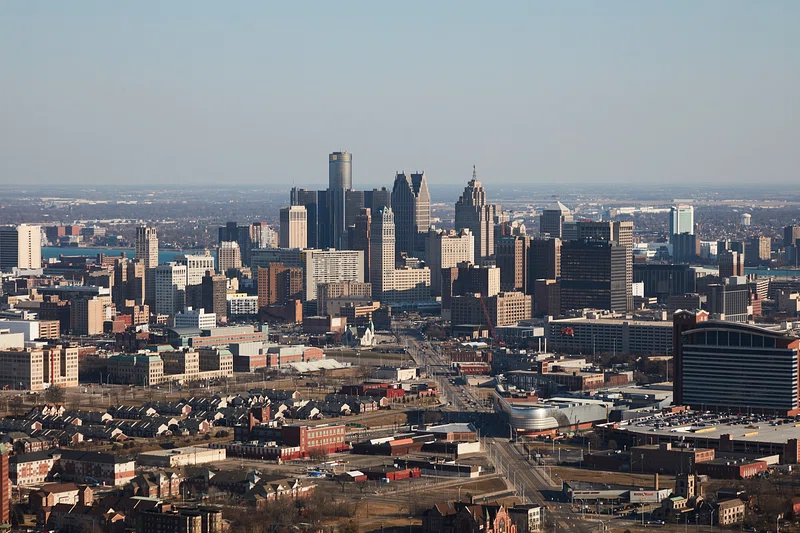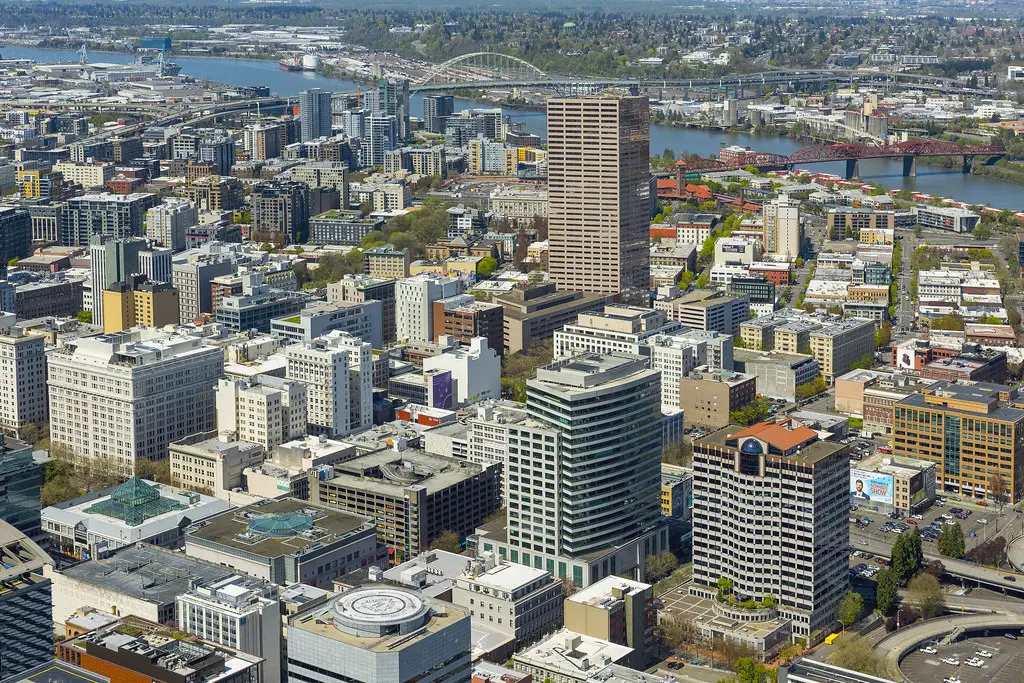Rent prices have been soaring for years in many U.S. cities, pushing more people to reconsider whether renting still makes sense financially. But experts now predict that rents may be about to drop sharply in some surprising places. Economic shifts, population movements, and new housing supply are combining to reshape rental markets across the country. Here are 11 cities where you might see rents tumble sooner than you expect—and why it could be good news for renters.
1. Austin, Texas

Austin has been one of the hottest rental markets in recent years, thanks to a booming tech industry and population growth. However, as noted by Newsweek, new apartment developments have flooded the market, outpacing demand and causing rents to plateau or even decline. Additionally, some companies have shifted to hybrid or remote work, reducing the need for downtown rentals. With all these factors, renters might start seeing more affordable options in the near future.
The city’s rapid growth has also led to rising vacancies, which landlords don’t like. When supply exceeds demand, rents generally drop, especially for newer or higher-end units. If you’re thinking about moving to Austin or negotiating your lease, it might pay to wait for these changes to settle. The rent collapse might not happen overnight, but it’s definitely on the horizon.
2. Nashville, Tennessee

Nashville’s music scene and cultural vibe attracted many new residents, pushing rents steadily upward. Yet, as reported by News Channel 5, a surge in new apartment construction combined with slowing job growth has softened the rental market. Many landlords are beginning to offer incentives like free months or reduced deposits to fill vacancies. This trend suggests rent reductions could follow as supply stabilizes.
Another factor is the rising cost of homeownership in the area, pushing some would-be buyers back into the rental pool temporarily. That creates short-term demand, but it’s unlikely to sustain rapid rent growth long-term. If you rent in Nashville, keeping an eye on new developments and vacancy rates is key. These early signs point to a rent correction coming soon.
3. Phoenix, Arizona

Phoenix’s explosive growth during the pandemic sent rents soaring, but the tide may be turning. According to AZFamily, a combination of increased new construction and rising mortgage rates slowing buyer demand is putting downward pressure on rents. As more homes come on the market, more renters might decide to buy instead, easing competition for rentals. This shift often causes landlords to lower prices to keep their units occupied.
Phoenix also saw a significant influx of remote workers who now might be moving back or choosing less expensive cities. When the rental market loses some of that demand, prices tend to soften. For renters, this could mean better negotiating power and more options in the months ahead. Phoenix’s rental bubble appears to be deflating gradually.
4. Miami, Florida

Miami has long been a magnet for international buyers and renters seeking sun and culture. But as noted by CRE Daily, recent increases in property taxes and new housing inventory have slowed rent growth. The city’s seasonal rental market also affects prices, with some landlords reducing rates during the off-season. This means renters could see lower prices or better deals outside of peak months.
Additionally, Miami’s cost of living has pushed some renters to explore neighboring areas. This migration slightly softens demand and encourages landlords to become more flexible. If you’re considering Miami, timing your move outside the busy season might get you a better rent. The market’s dynamics suggest rents won’t keep climbing as they have in the past.
5. Columbus, Ohio

Columbus has been quietly growing, attracting young professionals and families alike. Recently, new apartment developments have outpaced renter demand, leading to rising vacancy rates. This imbalance puts downward pressure on rents as landlords compete for tenants. For renters, this could mean the chance to snag a better deal in a city that’s still affordable and growing.
While Columbus doesn’t grab headlines like coastal cities, its rental market is becoming increasingly competitive. Economic diversification and steady job growth will keep it attractive, but the immediate effect is softening rents. If you’ve been considering a move, now might be a great time to explore options here. The rent collapse may be subtle but meaningful.
6. Detroit, Michigan

Detroit’s comeback story includes revitalized neighborhoods and a growing downtown scene. However, the rental market remains volatile. New units built to support the growth have not been fully absorbed yet, creating surplus inventory. This means landlords may need to reduce rents or offer perks to attract tenants.
Detroit’s affordability has drawn attention from investors and renters, but price corrections are common in turnaround cities. If you’re a renter looking for value and opportunity, Detroit may offer better deals soon. Watch for increased vacancies and rent drops in the months ahead.
7. Las Vegas, Nevada

Las Vegas saw a rental surge during the pandemic as people sought lower-cost living. However, increased construction combined with a slow return of tourism has softened the market. Landlords face pressure to lower rents to keep properties occupied. This trend points to a rent decline that could last beyond the short term.
The city’s dependence on tourism also means rental demand can fluctuate seasonally. Renters might find better deals in off-peak months or in less central neighborhoods. If you’re flexible, Las Vegas could be a good spot to benefit from a rent cooldown.
8. Charlotte, North Carolina

Charlotte’s strong job market has driven population growth and rental demand. Yet, new apartment construction is catching up to this demand, leading to a slower rent increase pace. Landlords are starting to offer promotions or reduced rents to fill vacancies. This signals a potential rent drop as supply catches up.
The city’s affordable cost of living still makes it attractive, but renters should be patient. With more options on the market, you could negotiate better lease terms soon. Charlotte’s rental market is moving toward balance after rapid growth.
9. Tampa, Florida

Tampa experienced a wave of new residents moving in during the pandemic. The surge increased rental demand and prices sharply. Now, new developments are opening at a faster rate than renters can fill, leading to a softening market. Renters might find more negotiating power and better deals soon.
Additionally, Tampa’s seasonal population changes impact rental pricing cycles. Off-season rental prices often dip, providing opportunities for renters to save. Keep an eye on vacancy rates and lease incentives if you’re planning a move. Tampa’s market is shifting from rapid growth to stabilization.
10. Indianapolis, Indiana

Indianapolis has been growing steadily with a mix of new jobs and affordable living. However, rental supply growth is beginning to outpace demand, leading to higher vacancies. This imbalance can cause landlords to lower rents or offer more perks to keep units filled. Renters stand to benefit from this shift in the coming year.
The city’s relatively low cost of living makes it appealing to many, but the rental market is cooling after years of growth. Being patient and monitoring the market can help renters find better deals. Indianapolis’s rent collapse might be gradual but impactful.
11. Portland, Oregon

Portland’s rental market has been unpredictable due to social and economic changes in recent years. Increasing new construction and some population shifts have softened rental demand. As a result, landlords may need to reduce rents or provide incentives to attract tenants. This trend could create a more renter-friendly environment soon.
While Portland remains culturally vibrant, many renters are weighing affordability and quality of life. The rental market’s correction might make the city more accessible to those priced out before. If you’re interested in Portland, timing could be on your side. The next few years may bring welcome rent relief.
